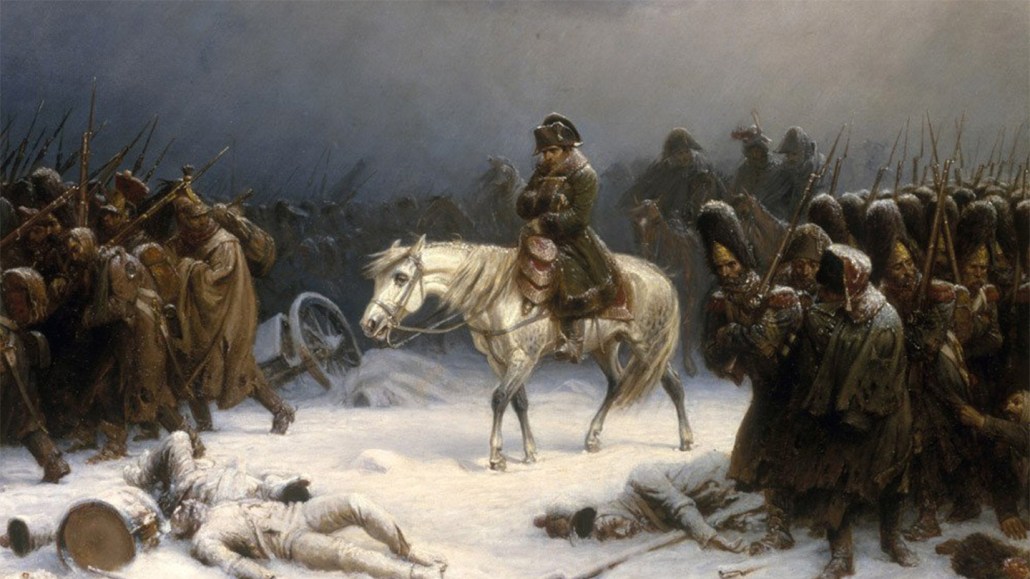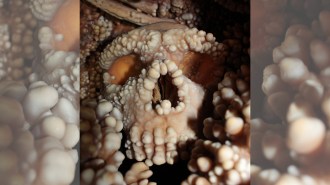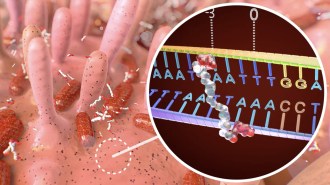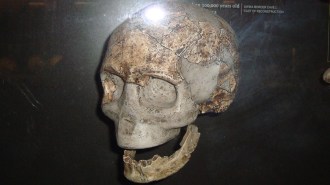Napoleon’s retreating army may have been plagued by these microbes
DNA from soldiers’ teeth reveal infections that may have worsened the 1812 retreat from Russia

Bitter cold, exhaustion, starvation and infectious disease contributed to the downfall of Napoleon’s army as it retreated from Moscow (depicted in this painting).
Adolph Northen/Wikimedia Commons
In 1812, the French Emperor Napoleon Bonaparte led a doomed army on a disastrous retreat from Russia. With food scarce, winter approaching and diseases running rampant, hundreds of thousands of soldiers ultimately perished. Scientists have now pinpointed some microbes that may have played a part in their demise.
Ancient DNA extracted from the teeth of Napoleonic soldiers revealed two species of fever-causing bacteria, geneticist Nicolás Rascovan of the Institut Pasteur in Paris and his colleagues report October 24 in Current Biology. The soldiers probably lived and died amid a teeming cauldron of infectious disease, something historians have long posited.
The results align with eyewitness accounts from over 200 years ago, says Rafe Blaufarb, a historian specializing in Napoleonic history. Doctors back then chronicled soldiers’ symptoms, which included fever, diarrhea, pneumonia and other signs of bacterial infection. The new work, which identified two species of bacteria not previously tied to the deadly retreat, brings some “DNA-level biological details to the story,” says Blaufarb, of Florida State University in Tallahassee.

Napoleon’s ill-fated invasion of Russia didn’t look so luckless at the beginning. The military leader had marshaled more than half a million troops and had already conquered much of Europe. But when the army made it to Moscow, it found an abandoned husk of a city that the Russians had burned. And winter was coming.
Napoleon decided that the only option left was retreat, Blaufarb says. So the army backed out of Russia, a grueling march in bitter cold with minimal food. There’s not much debate about how so many soldiers died. The subzero temperatures, lack of nourishment, exhaustion from walking hundreds of kilometers through ice and snow — “any of this could kill you,” he says. “It’s just a bad, bad, bad scene. It’s as bad as it can be.”
Illnesses plagued the troops, too. In 2006, DNA evidence from the remains of Napoleonic soldiers confirmed the presence of bacteria that cause typhus and trench fever, which jibes with historical accounts. But in that analysis, scientists searched for DNA from just those two bacteria — not others that may have been present.
The new work tried a different approach. “We went and searched for any known pathogen,” Rascovan says. Their technique, called shotgun sequencing, captures many bits of DNA present in a particular sample. That includes DNA from soldiers’ remains, from bacteria that may have infected them and from soil microbes living nearby. It’s like going fishing with a giant net rather than a rod baited for a specific type of fish.
The researchers analyzed the teeth of 13 soldiers buried in a mass grave in Lithuania. In four of the soldiers, the scientists detected a type of Salmonella enterica, which causes paratyphoid fever. In two soldiers, the team saw evidence of the lice-borne Borrelia recurrentis, bacteria responsible for relapsing fever.
Rascovan emphasizes that his team’s analysis looked at just a tiny fraction of the hundreds of thousands of soldiers who died, so it’s impossible to say how widespread infections were. “By no means are we trying to say that these two pathogens were a major cause of death in this army,” he says. But combined with cold and hunger, it’s probable that these and other pathogens played a role in the soldiers’ downfall.
As Blaufarb puts it: “The real mystery is how any of them got out at all.”







